Math Problems for 5th Graders
In 5th grade math, students extend their understanding of important concepts introduced in earlier grades. Help your child develop their skills and confidence with this list of math problems for 5th graders.

Author
Katie Wickliff
Published:
Oct 2024
Key takeaways
- Math word problems for 5th graders are more complex and require multiple steps.
- Math practice for 5th graders should include practice problems with real-world scenarios .
- Even hard math problems for 5th graders can be less intimidating when presented in a fun, interactive format.
We’ll concentrate on fifth grade math problems that reinforce what your child is learning at school. This collection of questions is organized into several sections: operations, variables & expressions, measurement, decimals, and fractions. The questions in each section progress in difficulty from easiest to hardest. If you’re looking for more 5th grade math problems, check out DreamBox Math, a personalized math program that adapts to your child’s unique needs, helping them build math skills and confidence.
35 math problems for 5th graders (with answers!)
5th Grade Word Problems (Mixed Operations)
- A baseball stadium can hold 5,000 fans. There are 2,600 Tigers fans and 2,800 Blues fans. Can the baseball stadium hold all of the fans together?
- Moe’s bagel factory needs to make 250 bagels for their storefront. Then, they received an order for 136 bagels from an elementary school. They also received an order for 817 bagels for a 5K race. How many bagels does Moe’s need to make altogether?
- There are 22 students in Mr. Thompson’s class. Each student needs to bring a box of colored pencils to school. If there are 10 pencils in each box, how many colored pencils will the class have altogether?
- Juan owns 12 sets of football cards. Each set has exactly 28 cards. How many cards does Juan own in all?
- Lila makes 109 cupcakes for the school bake sale. She packages the cupcakes into boxes of 6.
- How many full boxes will she have?
- How many cupcakes will be left over?
- Connor scored 802,114 points in the arcade game. Esmat scored 798,110 points in the arcade game. How many more points did Connor score?
- Hadley makes 7 friendship bracelets with 21 colorful lengths of string. How many lengths of string would Hadley need to make 12 friendship bracelets?
- Simone has $75 to spend on food for a party. She buys 3 containers of ice cream that cost $5.50 each. Then, she buys 6 packages of cookies that cost $3.25 each. How much money does Simone have left over?
- Felipe started a pet-sitting business. He charges $12 an hour for dog walks and $18 an hour for baths. In June, Felipe walks dogs for 10 hours and gives 9 dogs baths. How much money does Felipe earn in June?
- Sophie and her mom want to rent a canoe. Canoe rentals cost $45 for a half hour. If Sophie and her mom rent a canoe for 1 hour and 30 minutes, how much will it cost?
Variables and Expressions Practice Problems
11. Evaluate the following expressions when x=6.
- 19 – x =
- x+21=
- x+12-15=
12. Evaluate the following expressions when y=4.
- 3y+5=
- y(2)-7=
- 12- (y+4)=
13. Evaluate the following expressions when x=5 and y=2.
- 2 + x-y=
- 14 – (x+y) =
- 2x+6y=
Measurement Practice Problems
14. The playground is made up of four rectangular lots that are each 10 ft by 7 ft. What is the total area of the playground?
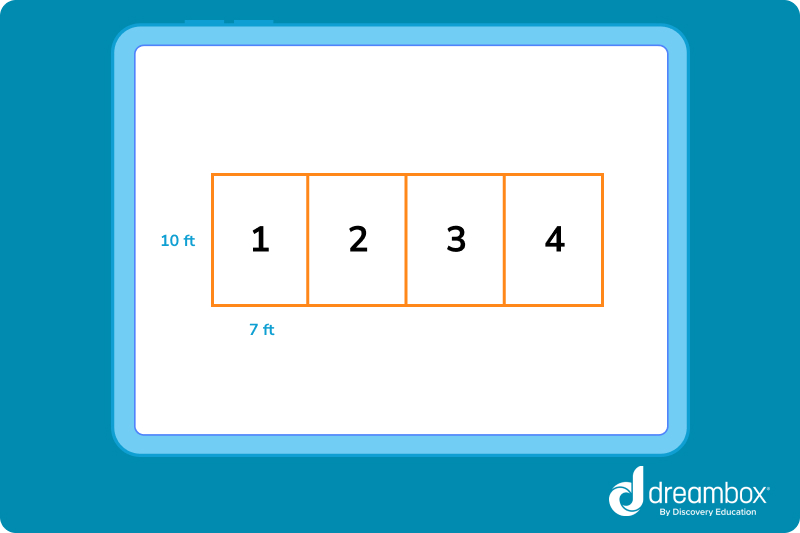
- Estimate the length of each object below. Circle your answer.
- Spoon: 60 ft/6in/60in/6ft
- Kitchen Table: 70yd/7ft/7in/70ft
- Paper Clip: 2in/2yd/2ft/20in
- Each sidewalk square is 3 feet wide, and there are 24 squares in a sidewalk side by side. What is the width of the sidewalk?
- Each spool of yarn is 30.5 feet long. Each container can hold 10 spools of yarn. In total, there are about _____ feet of tape.
- 3,000
- 300
- 40
- Mia’s water bottle can hold 24 ounces of water. She drinks two full water bottles each day. How many total cups of water does Mia drink each day?
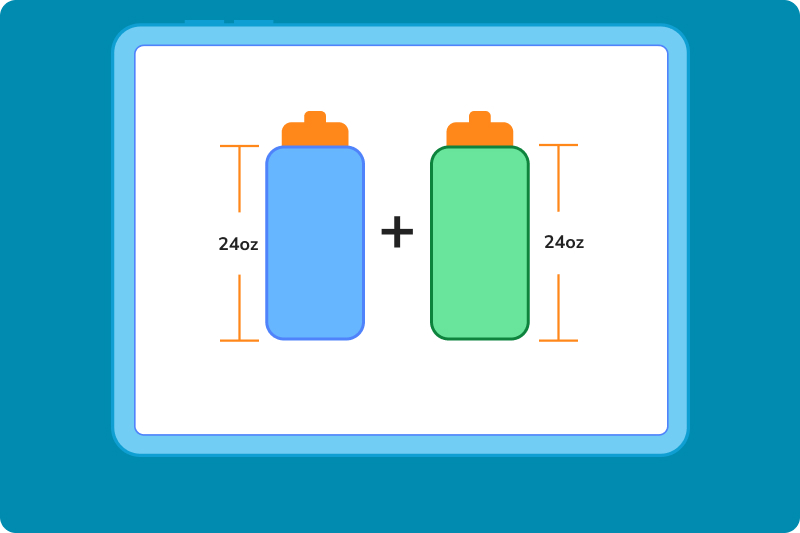
- Using the following measurements, determine the missing width.
- length= 6 m
- width= ?
- height= 1 m
- volume= 42 m
Table of contents
Practice 5th Grade Math with DreamBox!
Decimal Practice Problems
- Which decimal is larger 5.67 or 6.20
- Which decimal is larger 8.99 or 9.01
- Round the decimal 6.74 to the nearest tens place
- Round the decimal 5.934 to the nearest hundreds place
- The weight of a crate of oranges is 48.15 pounds. The weight of a crate of apples is 52.77 pounds. What is the sum of the two weights?
- A forklift can hold 200 pounds of weight. The weight of a crate of watermelons is 121.23 pounds. The weight of a crate of potatoes is 89.33 pounds. The weight of a crate of bananas is 32.11 pounds. Can the forklift hold all the weight?
Fraction Practice Problems
- 4⁄7 + 3⁄7=
- 6⁄9+ 1⁄9=
- 18⁄50 + 42⁄50=
- ½ + ⅔=
- 2⁄5 x 1⁄4=
- 4⁄7 + ⅛
- There was ⅝ of a pizza left in the refrigerator. If Carlos eats ¼ of the leftover pizza, how much does he eat? (hint: multiply!)
- Alice rides her bike ¾ of a mile every day. How many miles does Alice ride in 5 days?
- George is 6 feet tall. His friend Jake’s height is 11⁄12 of George’s height. How tall is Jake?
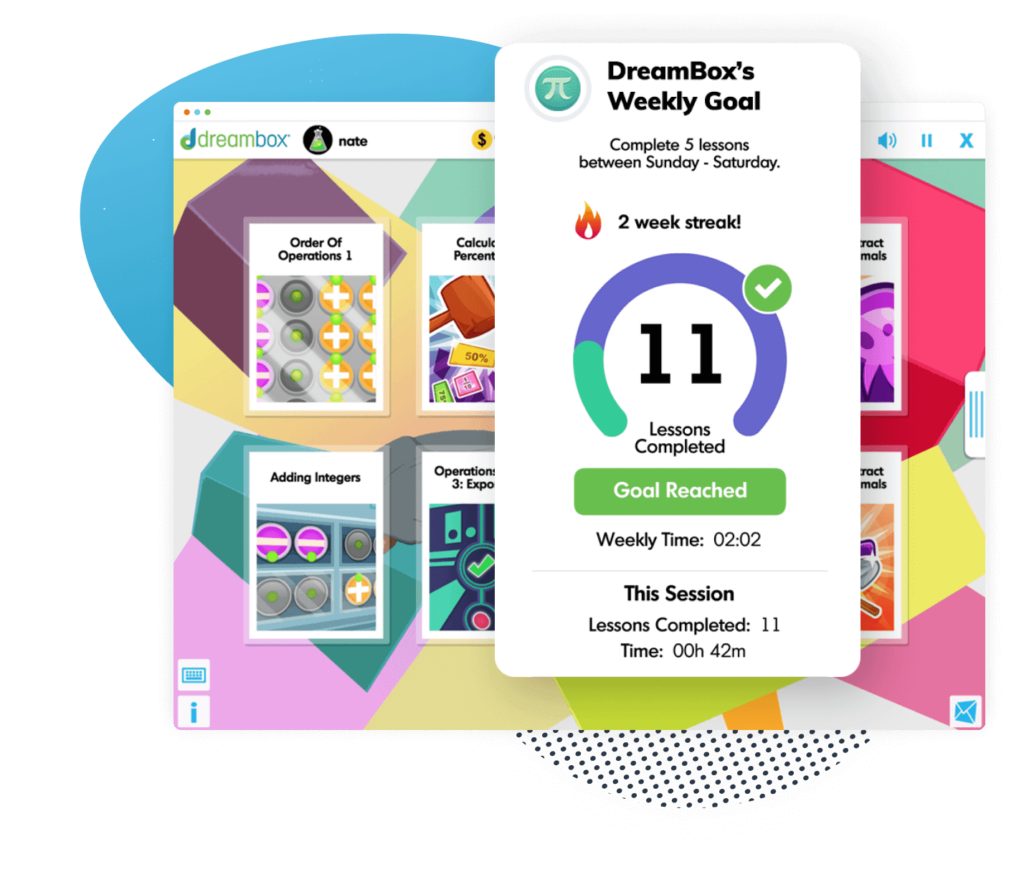
The math program that drives results
Get started today!
DreamBox adapts to your child’s level and learning needs, ensuring they are appropriately challenged and get confidence-building wins.
Answer Sheet for 5th Grade Math Practice
5th Grade Word Problems (Mixed Operations)
- No, the stadium cannot hold all the fans. (2,600+2,800=5,400)
- 1,203 bagels
- 220 pencils altogether (22×10=220)
- 336 cards. (28×12=336)
- A. 18 full boxes | B. 1 cupcake left over
- Connor scored 4,004 more points.
- Hadley would need 36 lengths of string.
- Simone has $39 left over.
- Felipe earns $282 in June.
- $135 to rent a canoe for 1 and a half hours.
Variables and Expressions
11. Evaluate the following expressions when x=6.
- 13
- 27
- 3
12. Evaluate the following expressions when y=4.
- 17
- 9
- 4
13. Evaluate the following expressions when x=5 and y=2.
- 5
- 7
- 22
Measurement
14. 280 square feet. Explanation: The area of one lot is 10 x 7 = 70 square feet. Take that area and times it by four, so 70 x 4 = 280 square feet.
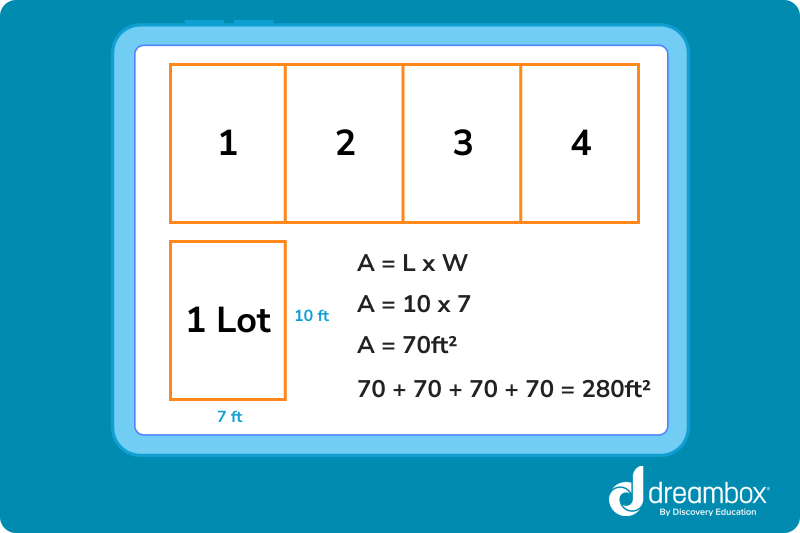
- Estimate the length of each object below. Circle your answer.
- Spoon: 6in
- Kitchen Table: 7ft
- Paper Clip: 2in
- 72 feet long
- 300
- Mia drinks 6 cups of water each day. Explanation: There are 8 ounces in each cup. So 24 divided by 8 is equal to 3 cups each day.
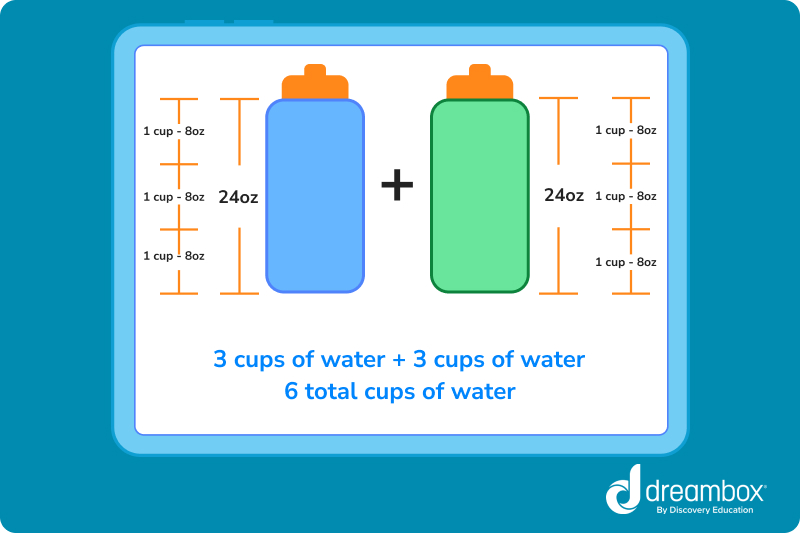
- 7m
Decimals
- 6.20
- 9.01
- 6.7
- 5.93
- 100.92
- No, the forklift cannot hold all the weight
Fractions
- 1
- 7⁄9
- 1
- 1
- 13⁄20
- 39⁄56
- 5⁄32
- Alice rides 3 ¾ miles in 5 days
- Jake’s height is 5 ½ feet
Take at home math practice to the next level
Empowering parents and educators to make math practice more impactful. Plus, your kids will love it.


About the Author
Katie Wickliff
Katie holds a master’s degree in Education, has over 15 years of education experience as a primary classroom teacher, and is Orton-Gillingham certified tutor. Most importantly, Katie is the mother of two primary school students, ages 8 and 11. She is passionate about maths education and firmly believes that the right tools and support will help every student reach their full potential.

